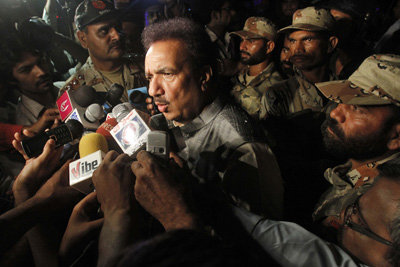Karachi, Pakistan’s economic hub, is one of the country’s main media centers, with more than 2,000 journalists and the head offices of leading media organizations. Journalists in the city have come under attack before, with seven journalists killed there since 1994. But the situation was never as dangerous as it has been this past year.
On Thursday, the Karachi Union of Journalists issued a strongly worded statement against recent attacks targeting the local press. Gunmen opened fire on media vehicles. In a separate incident, two reporters and a cameraman were attacked and beaten up. In the past four days, staff and leaders of the city’s newsrooms have been receiving all kinds of threats by SMS, email, and telephone calls, putting them under serious mental stress. At times, the messages were accusing media of being biased toward one group or another.
And that is just the tip of the iceberg in terms of the threats the press is facing in the city. The murder of Geo TV correspondent Wali Khan Babar, who was gunned down after covering gang violence in January, marked a turning point in attacks on local media. In recent months, some media organizations transferred journalists after being informed by the intelligence agencies of serious threats against them.
In areas like the Federally Administered Tribal Areas and Baluchistan, journalists know where the pressure comes from: Either the Taliban or intelligence agencies. In Karachi, you never know the source of the threat. There are dozens of potentially violent groups.
Journalists working for private TV news channels are left vulnerable, since their vehicles can be easily identified. Some of the mainstream channels provided their reporters with protective vests–but not their cameramen. Journalists are also untrained to cover conflict, particularly ethnic and sectarian violence or terrorism.
Tribal areas like the Federally Administered Tribal Areas (FATA) along the border with Afghanistan are still among the most dangerous places for journalists in Pakistan. But Karachi, as a leading media center, could be even more so. There are indications that the violence in the city may continue to escalate in the coming weeks, months, and years. The media is not ready to address these challenges.
